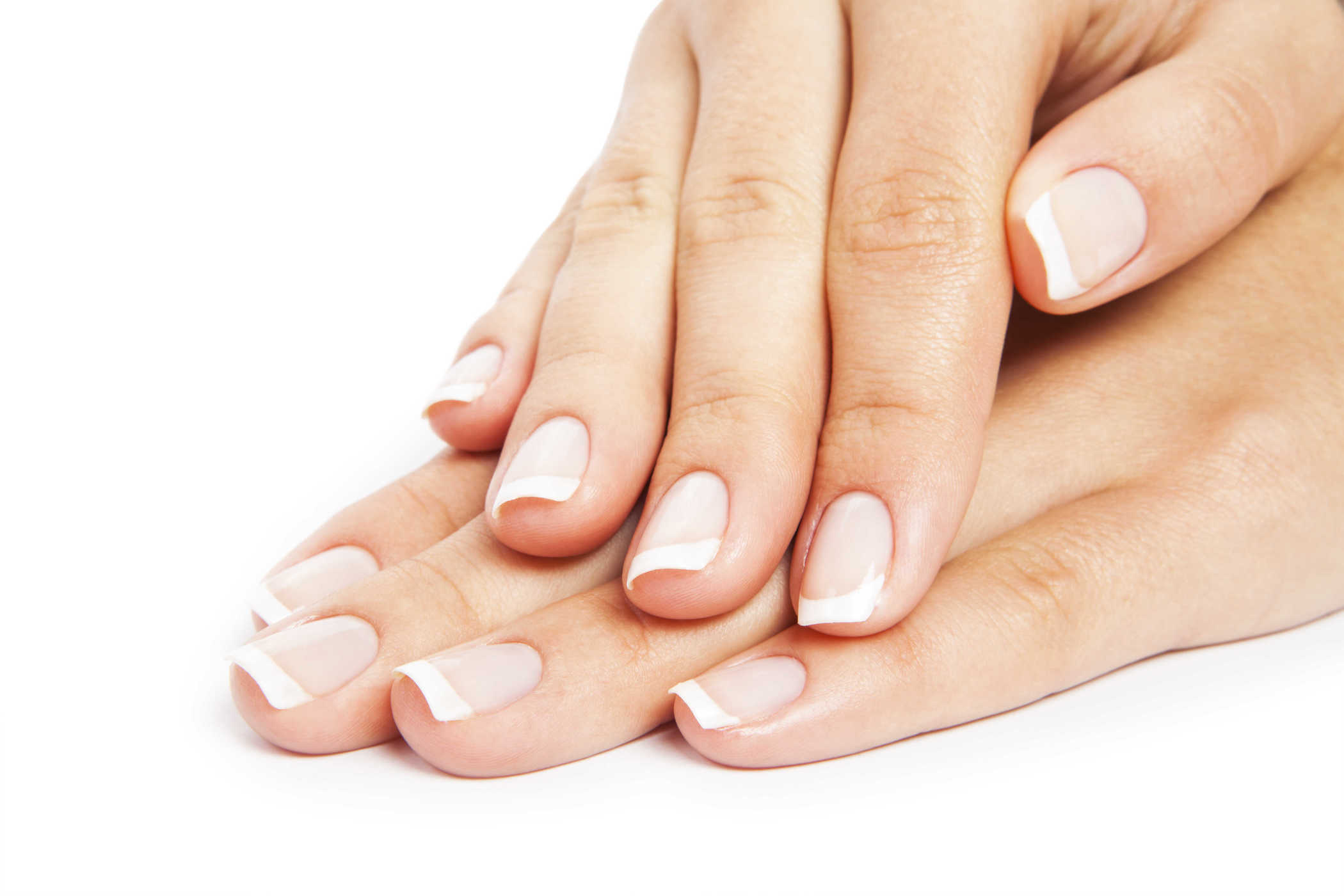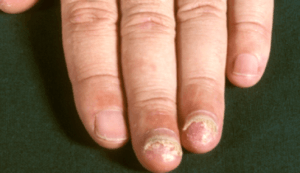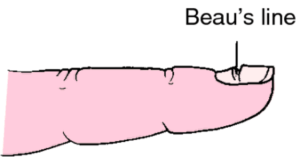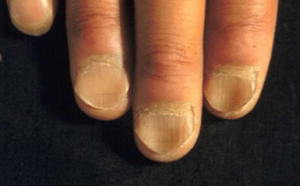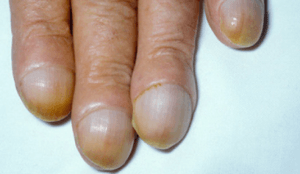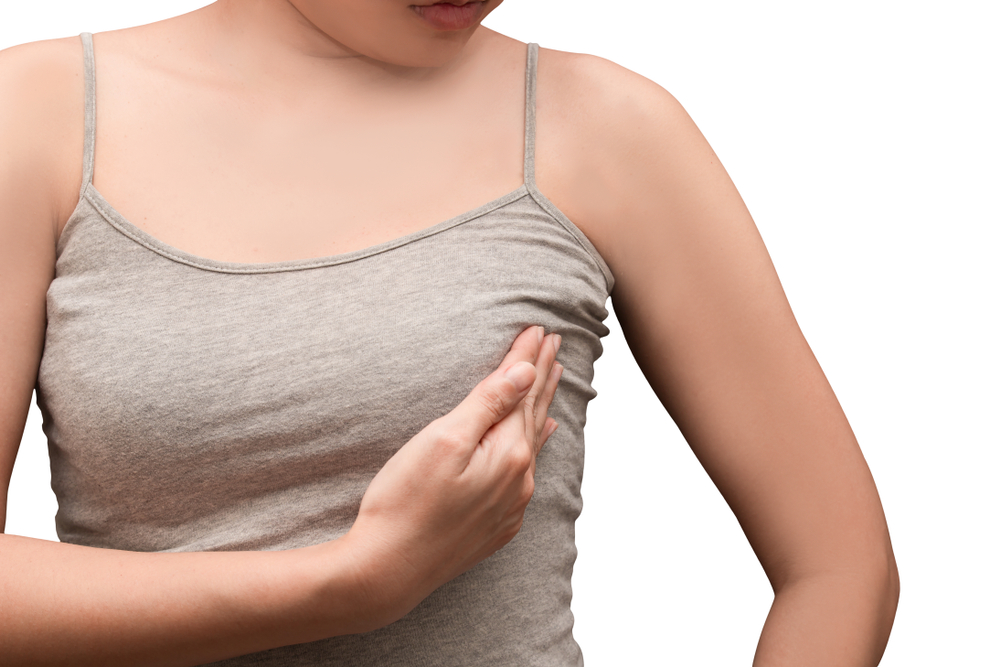Contents:
- Medical Video: What Your Nails Say About Your Health
- Nails are brittle and easily broken
- Nails change color
- Beau lines appear on the nails
- Koilinisia
- Clubbing
- Pincer nail deformity
Medical Video: What Your Nails Say About Your Health
Clean, neat, and well-maintained nails must be everyone's dream. Unfortunately, not everyone can have a nice and desirable nail shape due to a number of conditions. Certain conditions can cause nails to change in shape or 'abnormalities', from fungal nail infections, to the effects of accidents that injure finger and nail parts, or because of life habits. But it turns out that abnormalities in the nail are not only due to external factors, abnormalities that occur in our fingernails can actually be signs of disease in the body, you know!
Nails are brittle and easily broken
When a person is no longer young, or when someone often does activities that involve exposure to water or chemicals such as soap and detergent, the person's nails will become brittle and break easily. Fragile and easily broken nails can also be caused by fungal infections that attack the nail part.
However, not many people know that health problems in a person's body can also cause a person's nails to become brittle and break easily, including skin conditions lichen planus, inactive thyroid gland (underactive) or too active (overactive) in producing hormones in the body, nail psoriasis, even diseases such as reactive arthritis or Reiter's syndrome, although not often.
(Image source: http://www.nhs.uk/conditions/nail-abnormalities/Pages/Introduction.aspx)
Nails change color
Often without realizing it, the nails that were originally clear will gradually change in color. In many cases, a person's nails turn yellowish, may be due to a fungal infection, consumption of drugs such as carotene, or nail psoriasis. Not only that, many other diseases also cause a person's nails to change color, including lung damage due to bronchiectasis, sinusitis, inflammation of the thyroid gland, tuberculosis (TB), lymphedema, liver disease which causes almost the entire body to be yellow, to disease chronic paronychia.
In addition to changing color to yellow, nails may also change color to green-black, gray, brown, even to blue. Black-green nails can be caused by the growth of pseudomonas bacteria, gray can be caused by the consumption of drugs such as antimalarials or minocyclines, and the color brown can be caused by the presence of thyroid disease, pregnancy or malnutrition. Blue nails can also be a sign of a liver condition disorder called Wilson's disease, a condition in which the body has difficulty removing excess copper or when the body has a lack of oxygen.
Beau lines appear on the nails
Beau's line can be a sign of malnutrition in a person's body, marked by a horizontal line along the nail. In addition, several other health conditions can also be the cause of Beau's line on the nails, including diseases that cause high fever such as measles and scarlet fever, peripheral vascular disease, pneumonia, uncontrolled diabetes, and mineral deficiency of zinc in the body .
In addition, Beau's line can also appear in patients who are currently or have taken chemotherapy and patients who have Raynaud's disease while in an environment with very cold air. This abnormality in the form of the appearance of the Beau line can generally be removed. It takes about four to six months to remove this line on the fingers and six to 12 months on the toenails.
(Image source:http://img.tfd.com/mk/L/X2604-L-21.png)
Koilinisia
A general term for nail disorders that have a medical name koilinychia This is spooning or spoon nails because it causes the patient's nails to look like a spoon. A person's nails with koilinisia abnormalities will form an inward basin. K
When someone has a nail shape like this, it's likely that the person also has one of several health conditions such as iron mineral deficiency or anemia, hemochromatosis or iron accumulation in the body, Raynaud's disease, lupus erythematosu, and several other diseases related to heart and blood vessel disease.
(Image source: http://medicalpicturesinfo.com/wp-content/uploads/2011/11/Koilonychia-1.jpg)
Clubbing
This one nail disorder has a quite unique name: clubbing. Clubbing is a condition in which the tissue under the nail is thickened so that the nail becomes round and bulging, almost similar to an onion. In cases of decreased abnormality, this disorder is considered not too dangerous, but if this condition arises suddenly on your finger nails, there may be a disease or health disorder in the body.
Possible diseases along with nail growth include long-term lung and heart disease, such as lung cancer, bronchiectasis, or endocarditis, can also be inflammation of the intestine or inflammation of bowel disease (IBD), cirrhosis, even polycythemia, which is blood too thick.
(Image source: http://www.nhs.uk/conditions/nail-abnormalities/Pages/Introduction.aspx)
Pincer nail deformity
This nail abnormality can be identified by the presence of excessive curvature which increases with the length of the nail and reaches its maximum point at the end of the nail. At this point, you will see a part of the nail that looks like 'pinning' the fingertips without disturbing the skin's epidermal tissue. But often this disease causes pain in the patient's fingertips, where the nail curves to the tip of the finger.
This disorder is likely to occur in patients with psoriasis, SLE, Kawasaki disease, cancer, end-stage kidney disease, and genetic syndromes such as congenital paronias.
(Image source: http://www.arthritisresearch.us/nail-disorders/im.html)
There are many more abnormalities in the nails and health problems behind them. As much as possible contact the medical person concerned if your finger nails change color, texture, shape, or thickness for no apparent reason!

